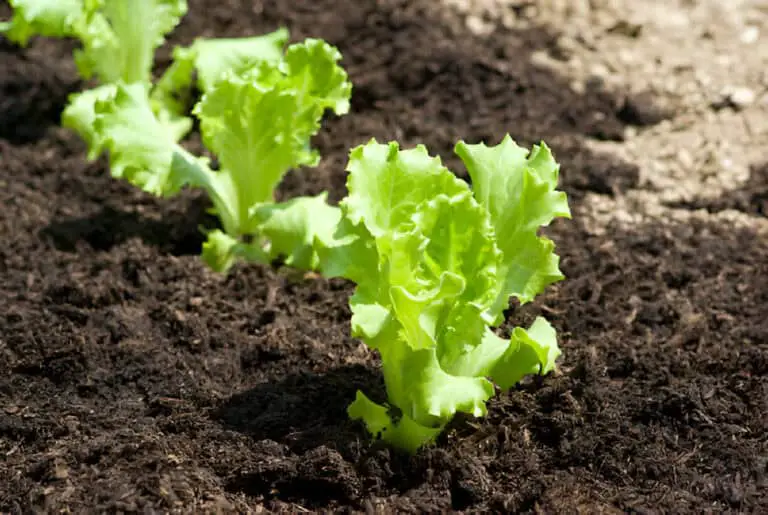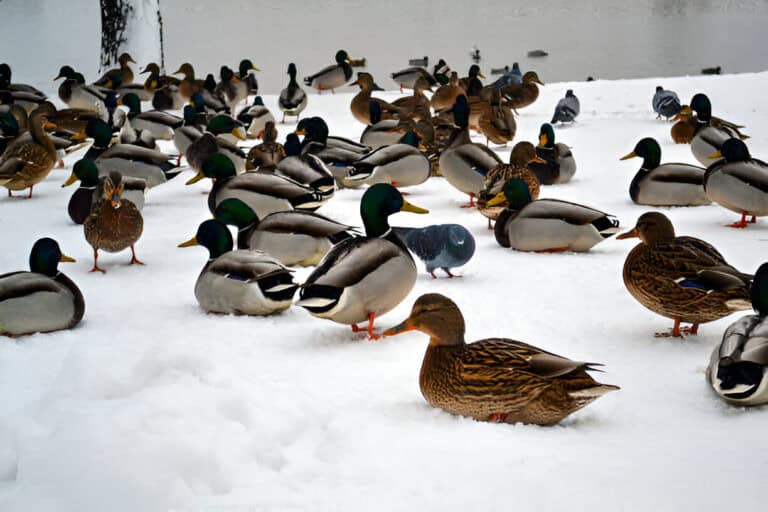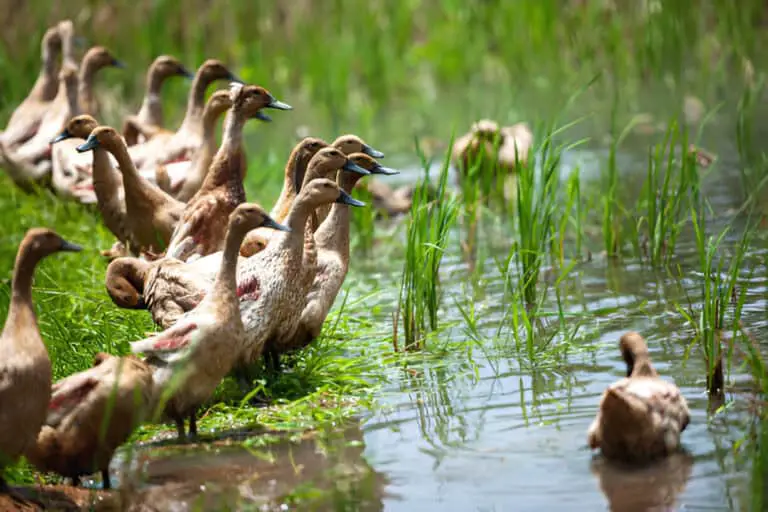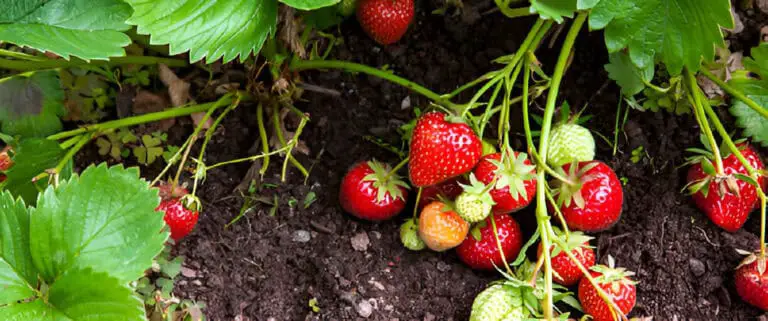What Is Clearing and Grubbing in Construction? A Comprehensive Guide
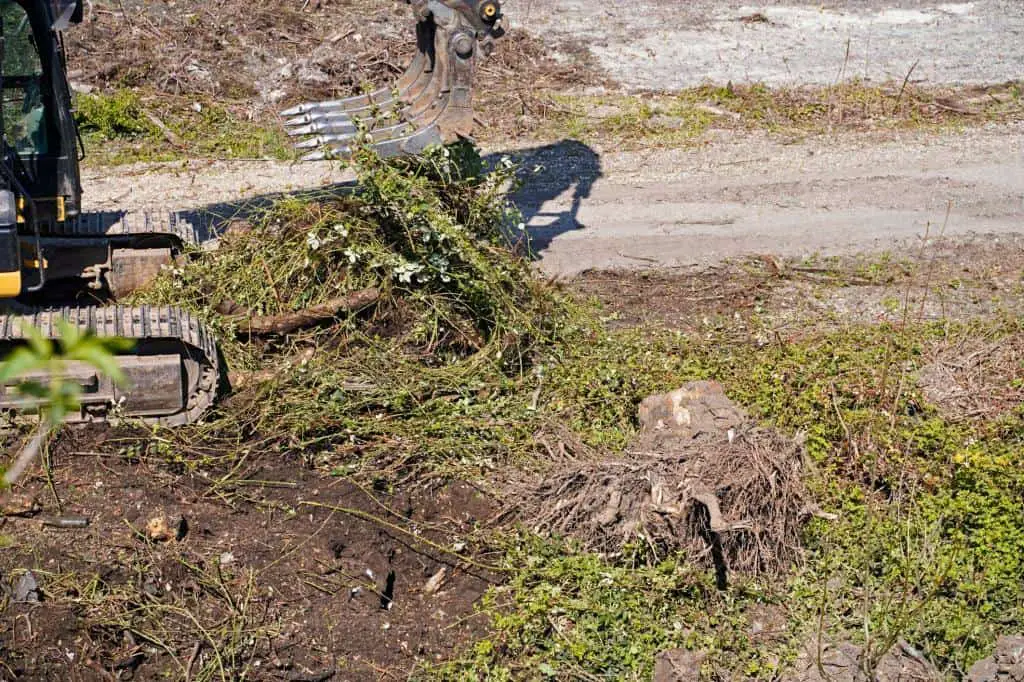
Clearing and grubbing: two seemingly simple words that hold the key to unlocking the potential of any construction project. Imagine a raw piece of land, overgrown with nature’s lush tapestry, waiting to embrace a grand vision.
Before architects can sketch their masterpieces, before hammers meet nails, and before cranes reach for the skies, there lies a vital groundwork that sets the stage for everything to come.
In this comprehensive guide, we venture into the fascinating world of clearing and grubbing in construction. From untamed wilderness to a pristine canvas, these initial steps wield transformative power, turning rugged landscapes into bustling sites of progress.
Join us as we explore the significance of these processes, their environmental impact, and the expert practices that pave the way for safe, efficient, and eco-conscious development. So, fasten your hard hats, and let’s uncover the secrets that lay beneath the earth’s surface.
What Is Clearing and Grubbing?
Clearing refers to the systematic removal of vegetation, trees, rocks, and other debris from a designated area to create space for construction activities. The primary objective is to strip the site down to its natural topsoil, ensuring that no organic matter or obstacles hinder the forthcoming development.
Grubbing, on the other hand, involves the removal of roots and stumps left behind after the clearing process. This step is critical as it ensures a clean, even surface that fosters stability and uniformity in subsequent land clearing in construction tasks.
Both clearing and grubbing are typically performed together, as they complement each other in preparing the land for further development.
The Importance of Clearing and Grubbing
Clearing and grubbing are vital initial stages in any construction project. Let’s explore the key reasons why these processes hold immense importance:
1. Site Preparation
Before any construction can begin, the land must undergo preparation to accommodate the planned structures. Clearing and grubbing create a well-defined area that is ready for surveying, grading, and other critical tasks.
2. Safety and Accessibility
By removing vegetation and debris, potential safety hazards are eliminated. Construction sites with overgrown vegetation, loose rocks, or uneven terrain can be dangerous for workers and equipment. Clearing and grubbing ensure a safe working environment, minimizing the risk of accidents and injuries.
3. Environmental Compliance
Clearing and grubbing are carried out in compliance with local regulations and environmental guidelines. Professional contractors take care to minimize any negative impact on the surrounding ecosystem while preparing the site for construction.
4. Efficient Construction Process
A well-cleared and grubbed site allows construction teams to work efficiently. The absence of obstructions facilitates the movement of equipment, reduces construction delays, and streamlines the entire building process.
The Clearing and Grubbing Process
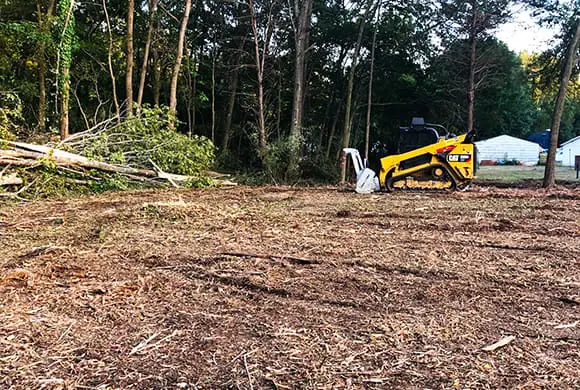
The clearing and grubbing process involves a series of systematic steps to ensure thoroughness and efficiency. Here’s an overview of the typical process:
1. Site Inspection and Assessment
Before commencing clearing and grubbing, a comprehensive site inspection is conducted. This assessment involves identifying the extent of clearing required, evaluating any potential environmental concerns, and determining the most appropriate clearing and grubbing methods for site preparation.
2. Obtaining Permits
Depending on the location and size of the project, permits may be required from local authorities. These permits ensure that the clearing and grubbing activities meet all necessary environmental and safety regulations.
3. Selective Tree Removal
In some cases, not all vegetation needs to be removed. Selective tree and stump removal allows for the preservation of certain trees that could enhance the aesthetics of the development or provide essential ecological benefits.
4. Clearing Debris
Once the trees and vegetation are removed, the site is cleared of any remaining debris, rocks, and other obstacles. This process requires careful attention to detail to ensure the complete removal of all materials.
5. Grubbing and Root Removal
Grubbing involves removing the stumps, roots, and any other underground elements left behind after clearing. This step prepares the site for grading and leveling activities.
Clearing and Grubbing in Different Types of Construction Projects
Clearing and grubbing are integral to various construction sectors, each presenting its unique set of challenges and considerations. In road construction, for instance, clearing might involve removing trees and vegetation along the planned route. In building construction, the site must be prepared to accommodate the structure’s foundation and surrounding infrastructure.
Pipelines, too, require careful clearing and grubbing to ensure safe passage for underground installations. Each project type demands tailored approaches and expertise to achieve optimal results.
To showcase the versatility and success of clearing and grubbing in different industries, case studies provide invaluable insights. Real-world examples of how various construction projects effectively tackled clearing and grubbing can serve as blueprints for future endeavors.
Read: Bulldozer Land Clearing: Benefits and Impacts for Environment
Cost and Time Considerations
As with any aspect of construction, cost and time considerations play a pivotal role in clearing and grubbing projects. Several factors influence the overall cost, such as the scale of the site, the extent of vegetation, and the complexity of the root systems. Additionally, the availability of specialized equipment and the proximity of disposal facilities can impact expenses.
Estimating the time required for clearing is also crucial. Timelines vary depending on the size and condition of the site, the techniques employed, and any unforeseen challenges encountered. Project managers must carefully plan and allocate time to ensure a smooth clearing phase.
To optimize efficiency and reduce expenses, construction companies may explore various strategies. Implementing advanced technology and equipment can speed up the process and minimize labor costs. However, it’s essential to strike a balance between meeting project timelines and preserving the environment.
The cost of clearing and grubbing can vary depending on the size and complexity of the project, local labor rates, and disposal fees. Here’s a rough breakdown of potential costs:
| Task | Cost Range |
| Tree Removal | $500 – $2,000 per acre |
| Grubbing and Root Removal | $300 – $1,000 per acre |
| Debris Clearing | $200 – $800 per acre |
| Erosion Control Measures | $100 – $500 per acre |
Safety Protocols and Risk Management
Construction sites are inherently hazardous environments, and clearing and grubbing pose their own set of risks. Safety protocols are of utmost importance during this phase to protect both workers and the environment. Proper training for equipment operators is essential to preventing accidents and injuries.
Identifying potential hazards on construction sites and implementing proactive measures to mitigate risks is part of responsible project management. A safe work environment not only protects workers but also ensures smooth and uninterrupted project progression.
Additionally, emergency response and contingency planning are vital components of risk management. Being prepared for unforeseen events can prevent situations from escalating and minimize potential damages.
Sustainable Practices and Future Outlook
As environmental consciousness continues to grow, sustainable practices in construction have become a top priority. Advancements in sustainable clearing and grubbing techniques strive to minimize disruption to the ecosystem while preparing the site for development.
Integrating biodiversity and ecological conservation into construction practices is key to maintaining a delicate balance between human development and environmental protection. By creating spaces that harmoniously coexist with nature, future construction projects can embrace a more sustainable future.
The road ahead holds promising future trends and innovations in the field of clearing and grubbing. The construction industry is continually evolving to incorporate the latest technologies and eco-friendly methods.
Stakeholders, including developers, contractors, environmentalists, and policymakers, all play a vital role in promoting environmentally responsible clearing and grubbing practices. Collaborative efforts are necessary to ensure that construction projects harmonize with nature and leave a positive impact on our planet.
In conclusion, clearing and grubbing are not merely preliminary steps in construction; they are the foundation on which responsible and sustainable development rests. By prioritizing environmental considerations, embracing safety protocols, and staying at the forefront of innovation, the construction industry can pave the way for a brighter, greener future.
Conclusion
Clearing and grubbing are foundational steps in any construction venture. By understanding the significance of these processes and implementing best practices, developers and construction teams can create a well-prepared site that serves as the perfect canvas for their projects.
Before commencing clearing and grubbing, it’s essential to conduct a thorough site assessment, obtain necessary permits, and engage the services of experienced professionals. By following responsible environmental practices and adhering to local regulations, the clearing and grubbing process can be completed efficiently, setting the stage for a successful construction endeavor.
So, the next time you pass by a construction site, you’ll have a deeper appreciation for the meticulous preparations that take place behind the scenes to bring new structures to life.
FAQs on Clearing and Grubbing in Construction
How is clearing different from grubbing in construction?
Clearing involves the systematic removal of vegetation, rocks, and debris from a designated area, creating space for construction. Grubbing, on the other hand, focuses on removing roots and stumps left behind after clearing. Both processes are complementary and essential for site preparation.
What equipment is used for clearing and grubbing?
Common equipment includes bulldozers, excavators, mulchers, and chainsaws for clearing vegetation. Grubbing requires specialized equipment like grubbing hoes and root rakes to remove roots and stumps effectively.
How much does clearing and grubbing typically cost?
The cost varies based on project size, complexity, and location. Generally, tree removal costs range from $500 to $2,000 per acre, while grubbing and root removal costs between $300 and $1,000 per acre. Debris clearing and erosion control measures cost approximately $200 to $800 and $100 to $500 per acre, respectively.
What are the safety measures during the clearing process?
To ensure safety, workers should wear appropriate personal protective equipment, such as helmets, gloves, and eye protection. Regular equipment maintenance and proper training are essential. Hazard assessments, communication protocols, and first aid readiness should be in place.
Can sustainable practices be implemented in clearing and grubbing?
Yes, sustainable practices can be employed, such as selective clearing to preserve ecologically valuable trees. Mulching cleared vegetation can be recycled for erosion control. Employing low-impact machinery and implementing erosion control measures can minimize environmental impact.
Why is clearing and grubbing important before construction?
Clearing and grubbing create a clean canvas for construction, eliminating potential safety hazards and allowing efficient project development. Proper site preparation ensures compliance with environmental regulations, protects ecosystems, and reduces project delays.
Are there any alternatives to traditional clearing and grubbing methods?
Yes, alternatives like hydroseeding and controlled burns can clear land while promoting ecological balance. Mechanical methods like mowing or herbicides can be used for vegetation management.
What are the potential environmental impacts of clearing and grubbing?
Clearing and grubbing can lead to soil erosion, habitat disruption, and loss of biodiversity. However, implementing sustainable practices and erosion control measures can mitigate these impacts.
How can I ensure compliance with environmental regulations during the process?
Engage qualified contractors familiar with local environmental laws. Obtain necessary permits and conduct environmental assessments before commencing work. Adhere to responsible clearing and grubbing practices, such as erosion control and waste management.
Can clearing and grubbing be done in densely vegetated areas without significant damage?
Yes, it can be done carefully with selective clearing and minimal soil disturbance. Proper planning, experienced professionals, and low-impact equipment usage can reduce the impact on densely vegetated areas.
Is it possible to salvage or relocate certain plants during the clearing process?
Yes, salvaging or relocating valuable plants is possible. Consult with environmental experts to identify and preserve plants that could be transplanted to other suitable areas.

